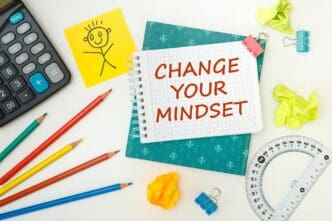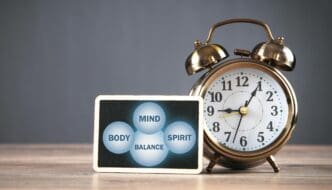The persistent pile of mail on the kitchen counter, the overflowing closet, and the stacks of books on the nightstand are more than just a housekeeping issue; they are potent contributors to mental clutter, stress, and anxiety. A growing body of research in psychology and neuroscience reveals a direct, bidirectional relationship between our external physical environment and our internal mental state. For countless individuals, the chaos in their homes and workspaces translates into a chaotic mind, draining cognitive resources, increasing levels of the stress hormone cortisol, and hindering the ability to focus and relax in the very places meant for sanctuary and productivity.
The Science Behind the Stress: How Clutter Impacts Your Brain
The connection between a messy room and a stressed mind is not merely a feeling; it is a physiological and neurological reality. Our brains are hardwired to interpret our surroundings, and a disorganized environment sends continuous signals that our work is unfinished, triggering a cascade of stress responses.
Cortisol and the Stress Response
One of the most direct impacts of clutter is on our endocrine system. Research, including a notable study from UCLA’s Center on Everyday Lives of Families, has shown a link between a high density of household objects and elevated levels of cortisol, the body’s primary stress hormone. This effect was found to be particularly pronounced in women, who may be socialized to feel a greater sense of responsibility for the home’s management.
When cortisol levels are chronically high, it can lead to a host of negative health outcomes. These include persistent anxiety, sleep disturbances, digestive problems, and a weakened immune system. The visual noise of clutter acts as a constant, low-grade stressor that keeps this system activated, preventing the body and mind from entering a state of genuine rest.
Cognitive Overload and Diminished Focus
Your brain has a finite amount of attentional capacity. In an organized and tidy environment, you can more easily direct your focus toward a specific task, whether it’s writing a report, reading a book, or having a meaningful conversation. In a cluttered space, however, dozens of objects are constantly competing for that limited attention.
Neuroscientists at the Princeton University Neuroscience Institute found that a disorganized environment profoundly impairs the brain’s ability to focus and process information. The visual cortex becomes overwhelmed by task-irrelevant objects, making it harder to filter out distractions. This cognitive overload forces your brain to work harder to accomplish the same tasks, leading to mental fatigue and reduced productivity.
Decision Fatigue and Procrastination
Every item in a cluttered space represents a postponed decision. That stack of papers requires sorting, the unused exercise equipment needs to be sold or donated, and the clothes on the chair need to be put away. Each glance at these items triggers a micro-decision, draining your mental energy reserves throughout the day.
This phenomenon is known as decision fatigue. When our capacity for making thoughtful choices is depleted, we are more likely to make poor decisions or, more commonly, to avoid making decisions altogether. This leads directly to procrastination, which in turn creates more clutter, trapping individuals in a frustrating and self-perpetuating cycle of inaction and overwhelm.
The Psychological Weight of Possessions
Beyond the neurological impact, clutter carries a significant psychological weight. The things we own are often tied to our identity, memories, and aspirations, making the process of managing them deeply personal and sometimes painful.
Clutter as Unfinished Business
At its core, clutter is a physical manifestation of unresolved issues. It can represent a reluctance to deal with the past, such as holding onto items from a previous relationship, or anxiety about the future, which fuels the “just in case” mentality of keeping things we don’t need.
This accumulation of “unfinished business” can create underlying feelings of guilt, shame, and inadequacy. It serves as a constant physical reminder of what we haven’t done, contributing to a negative self-perception and a feeling of being stuck or out of control of our own lives.
Emotional Attachments and Letting Go
Parting with possessions can be surprisingly difficult. We form emotional attachments to objects for many reasons: they may have been a gift, they may represent a cherished memory, or we may feel guilty about the money we spent on them. This emotional component is what makes decluttering more than a simple cleaning task.
Acknowledging these attachments is the first step toward letting go. The goal is not to erase memories but to recognize that the memories reside within us, not within the objects themselves. Freeing ourselves from the obligation to keep everything allows us to honor the past without being burdened by it.
The Link to Mental Health Conditions
For some, the interplay between physical and mental clutter is amplified by underlying mental health conditions. While clutter does not cause these conditions, it can significantly exacerbate their symptoms.
For individuals with depression, the lack of energy and motivation can make even basic tidying feel like an insurmountable task. The resulting cluttered environment can then deepen feelings of hopelessness and being overwhelmed. For those with anxiety disorders, the visual chaos can act as a major trigger, increasing feelings of tension and being unable to relax. In people with ADHD, challenges with executive functions like organization and prioritization make creating and maintaining order especially difficult, and the cluttered space further undermines their ability to focus.
On the extreme end of the spectrum is Hoarding Disorder, a recognized clinical condition where the perceived need to save items and the distress associated with discarding them leads to an accumulation of possessions that renders living spaces unusable. This condition requires professional therapeutic intervention and highlights the profound connection our minds can have with our belongings.
Reclaiming Your Space, Reclaiming Your Mind: Actionable Steps to Declutter
Understanding the link between physical and mental clutter is powerful because it reframes decluttering as an act of mental health care. By taking deliberate, manageable steps to organize your environment, you can create a positive feedback loop that promotes mental clarity and calm.
Start Small to Build Momentum
The biggest mistake people make is trying to tackle everything at once. This approach almost always leads to feeling overwhelmed and giving up. Instead, start with a single, highly contained area, such as one drawer, one shelf, or the surface of your coffee table.
Set a timer for just 10 or 15 minutes. The success of clearing a small space provides a tangible reward and a dose of dopamine, building the motivation and confidence needed to move on to larger projects. This micro-progress is key to overcoming the inertia of clutter.
The Four-Box Method
To streamline the decision-making process, use a simple sorting system. Get four boxes or create four distinct piles and label them: Keep, Donate/Sell, Trash/Recycle, and Relocate. The “Relocate” box is crucial for items that have a home but are in the wrong place.
As you pick up each item, force yourself to make an immediate decision and place it in one of the four boxes. This structured approach prevents you from simply moving piles around and ensures you are taking definitive action on every single object.
Asking the Right Questions
When you’re stuck on an item, ask yourself a series of direct questions to move past emotional roadblocks. Does this item serve a practical purpose in your life right now? Have you used it in the past year? If you saw it in a store today, would you buy it again?
Perhaps most importantly, consider the famous question popularized by organizing consultant Marie Kondo: “Does it spark joy?” More broadly, ask yourself if the item adds positive value to your life. If an object is associated with guilt, obligation, or negative memories, its emotional weight may outweigh any practical reason for keeping it.
Creating Systems for Maintenance
Decluttering is not a one-time project; it is the creation of new habits. To prevent clutter from returning, you must build simple systems into your daily routine. Implement a “one in, one out” rule: for every new item you bring into your home, one similar item must leave.
Ensure that every item you decide to keep has a designated “home.” This makes tidying up a quick and thoughtless process. Finally, schedule brief, regular “resets”—just 10 minutes before bed to put things back in their place can prevent small messes from turning into overwhelming clutter.
The relationship between our physical surroundings and our mental well-being is undeniable. A cluttered home is often a reflection of a cluttered mind, and a cluttered mind struggles to find peace in a chaotic environment. By treating the act of decluttering not as a chore but as a vital practice of self-care, we can actively reduce stress, improve focus, and reclaim our living spaces as true sanctuaries of calm and clarity. Taking control of your environment is a powerful first step toward taking control of your mental health.








